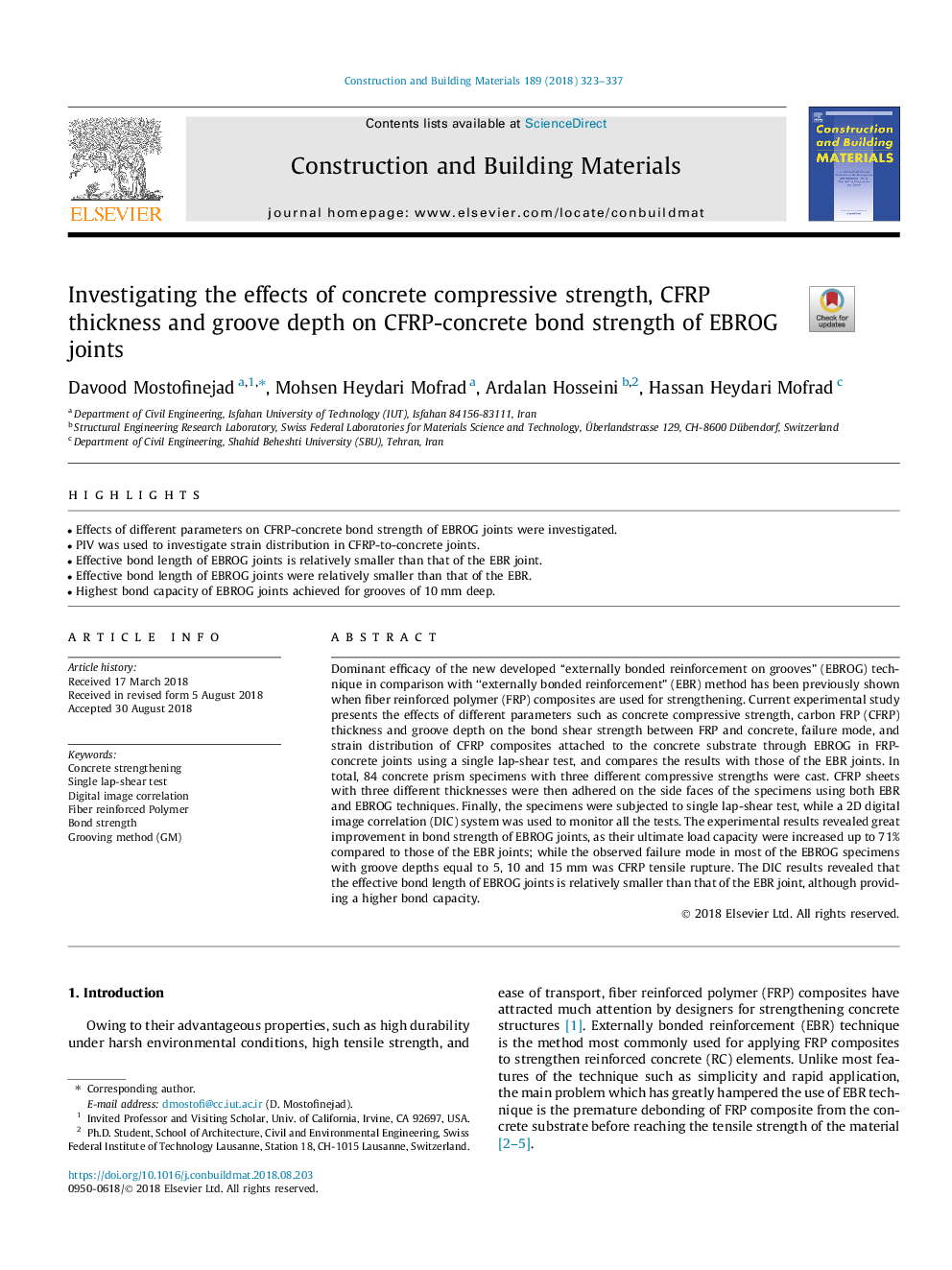| Article ID | Journal | Published Year | Pages | File Type |
|---|---|---|---|---|
| 10145670 | Construction and Building Materials | 2018 | 15 Pages |
Abstract
Dominant efficacy of the new developed “externally bonded reinforcement on grooves” (EBROG) technique in comparison with “externally bonded reinforcement” (EBR) method has been previously shown when fiber reinforced polymer (FRP) composites are used for strengthening. Current experimental study presents the effects of different parameters such as concrete compressive strength, carbon FRP (CFRP) thickness and groove depth on the bond shear strength between FRP and concrete, failure mode, and strain distribution of CFRP composites attached to the concrete substrate through EBROG in FRP-concrete joints using a single lap-shear test, and compares the results with those of the EBR joints. In total, 84 concrete prism specimens with three different compressive strengths were cast. CFRP sheets with three different thicknesses were then adhered on the side faces of the specimens using both EBR and EBROG techniques. Finally, the specimens were subjected to single lap-shear test, while a 2D digital image correlation (DIC) system was used to monitor all the tests. The experimental results revealed great improvement in bond strength of EBROG joints, as their ultimate load capacity were increased up to 71% compared to those of the EBR joints; while the observed failure mode in most of the EBROG specimens with groove depths equal to 5, 10 and 15â¯mm was CFRP tensile rupture. The DIC results revealed that the effective bond length of EBROG joints is relatively smaller than that of the EBR joint, although providing a higher bond capacity.
Keywords
Related Topics
Physical Sciences and Engineering
Engineering
Civil and Structural Engineering
Authors
Davood Mostofinejad, Mohsen Heydari Mofrad, Ardalan Hosseini, Hassan Heydari Mofrad,
